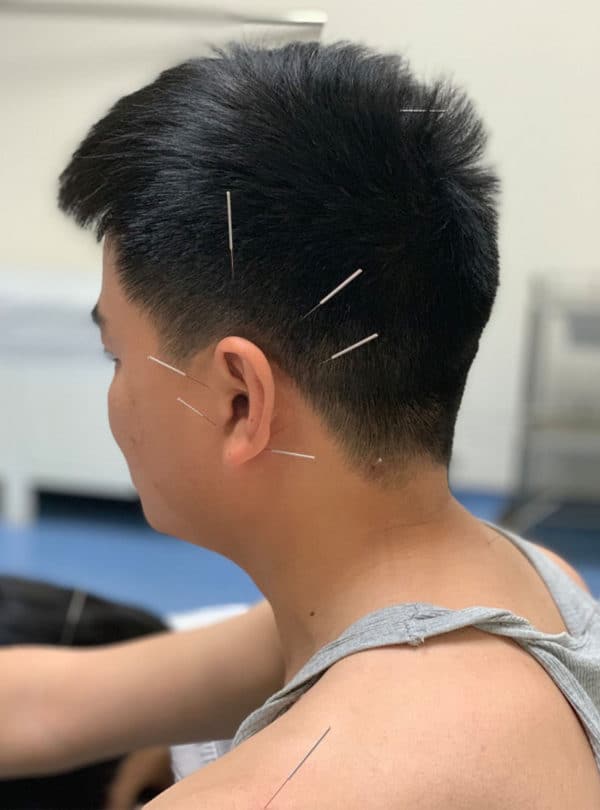Research 1
OBJECTIVE:
TMJ To compare the effect of real acupuncture and sham acupuncture in the treatment of temporomandibular joint myofascial pain, to establish the true efficacy of acupuncture.

Patient receiving acupuncture for TMJ disorder
METHODS:
A double-blind randomized controlled trial conducted in the TMD Clinic, at the School of Dentistry, The University of Manchester. Twenty-seven patients were assigned to one of two treatment groups. Group 1 received real acupuncture treatment whilst Group 2 received a sham acupuncture intervention. Both the assessor and the patient were blinded regarding the group allocation. Baseline assessment of the outcome variables was made prior to the first treatment session and was repeated following the last treatment.
RESULTS:
The results demonstrated that real acupuncture had a greater influence on clinical outcome measures of TMJ MP than those of sham acupuncture, and the majority of these reached a level of statistical significance.
CONCLUSION:
Acupuncture had a positive influence on the signs and symptoms of TMJ MP. In addition, this study provides evidence that the Park Sham Device was a credible acupuncture control method for trials involving facial acupoints.
Resources
1- By Acupuncture-Moxibustion Department, Xiangcheng Municipal Hospital of TCM, Xiangcheng 466200, Henan Province, China. All rights reserved.
– http://www.ncbi.nlm.nih.gov/pubmed/20886789
Research 2
Acupuncture for Treating Temporomandibular Dysfunction: Retrospective Study on Safety
and Efficacy
“4. Discussion and Conclusions. The results of this study showed that Chinese acupuncture was safe as administered here and was efficient in alleviating pain in patients suffering from TMD not caused by an osseous source. In approximately 90% of these patients, a statistically significant pain alleviation was observed, with the pain completely gone in most patients.”
Acupuncture for Treating Temporomandibular Disorder: Retrospective Study on Safety and Efficacy
Research 3
TMJ & Acupuncture
This meant that their symptoms had decreased somewhat, and they could still not open their mouths as wide as they had before their disorder. In addition, six cases had no effect, meaning that they did not experience any improvement. Of those who were judged cured, 72 were cured within one course of treatment, while 29 required two courses.